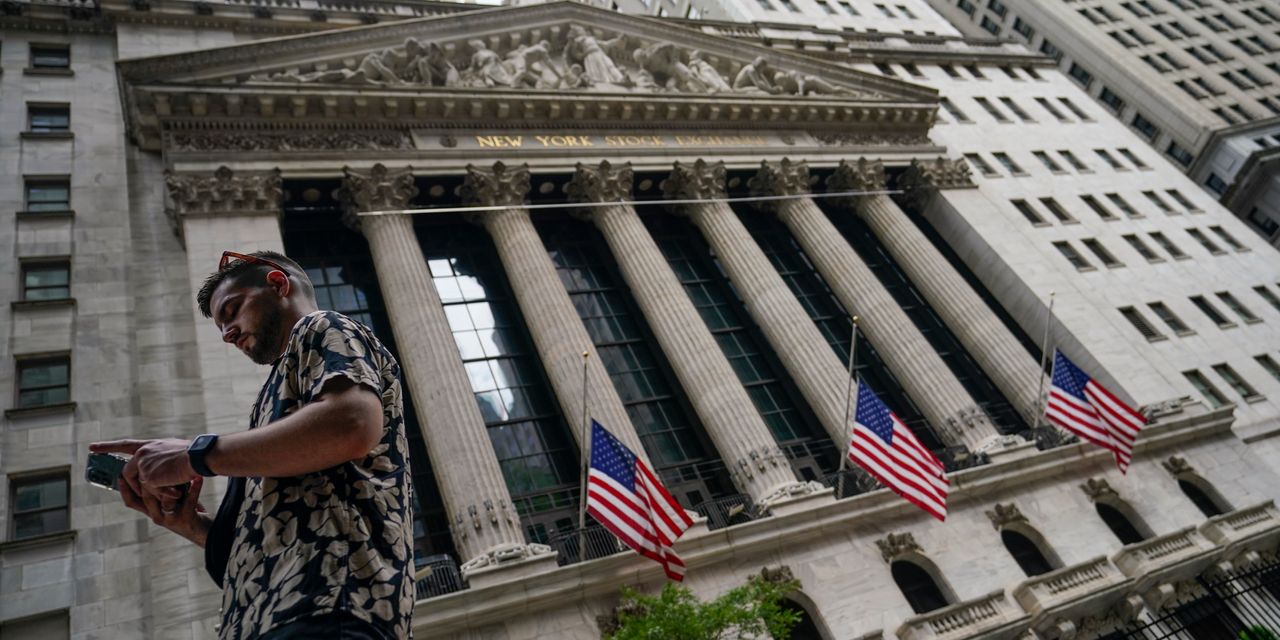U.S. stock futures rose even as short-term Treasury yields hovered near their highest since 2007 after last week’s Fed rate hike, a relatively robust jobs report and ahead of important inflation data.
How are stock index futures trading
-
S&P 500 futures
ES00,
+0.24%
rose 10 points, or 0.3%, to 3,789 -
Dow futures
YM00,
+0.29%
added 74 points, or 0.2%, 32,502 -
Nasdaq 100 futures
NQ00,
+0.17%
gained 52 points, or 0.5%, to 10,942
On Friday, the Dow Jones Industrial Average
DJIA,
rose 402 points, or 1.26%, to 32403, the S&P 500
SPX,
increased 51 points, or 1.36%, to 3771, and the Nasdaq Composite
COMP,
gained 132 points, or 1.28%, to 10475.
What’s driving markets
Equity futures are firmer even as 2-year Treasury yields
TMUBMUSD02Y,
flirt with 15-year highs and traders eye consumer prices data later in the week.
Stocks of late have continued to be primarily in a negative thrall to expectations of the Federal Reserve’s rate rise trajectory. But traders on Monday showed signs of shrugging off such concerns.
After last Wednesday’s 75 basis point hike in borrowing costs by the Fed, and Friday’s stronger than expected jobs report, Tom Barkin, Richmond Fed President, told CNBC that interest rates would rise at a slower pace but for longer and with a higher top rate for the cycle.
Barkin’s tone matches that of Chair Jerome Powell, an indication the central bank is trying to steer the market away from hopes of any imminent policy reversal.
The 2-year Treasury yield, which at the start of the year was below 80 basis points, rose 2 basis points to 4.713%. Over the same period the S&P 500 has lost 20.9%.
“Recapping last week now and the dovish pivot trade pivoted one way and the other across the week but ultimately Powell’s FOMC press conference put the hawks back in the ascendency,” said Jim Reid, strategist at Deutsche Bank.
Barkin also noted that by the time the Fed gathers for its December policy decision it will have seen two more consumer prices reports, the first coming this Thursday.
Before that investors may consider the U.S midterm elections. “History suggests the midterms are a big influence on markets as they always seem to rally once mid-terms (or Presidential elections) are out the way,” said Deutsche’s Reid.
Reid added that although his base case was that 2023 would be “a bad year for the global economy and risk, in every 12-month period post mid-terms over the last century, the equity market has always gone up with the inflexion point being immediately after mid-terms”.
Meanwhile, a positive turn for Asian markets provided some support, analysts noted. The Hang Seng
HSI,
climbed nearly 3%.
“The persistent rumours that China’s Covid restrictions will be relaxed played a part in Friday’s risk on rally. Updates from the health authorities over the weekend confirmed that the policy of ‘dynamic clearing’ will be continued, but a strong start to the week in Asia suggests that investors are still anticipating changes,” said Ian Williams, strategist at Peel Hunt.
However, Apple’s shares
AAPL,
were down 1% after it warned of problems with production of the iPhone 14 in China.



